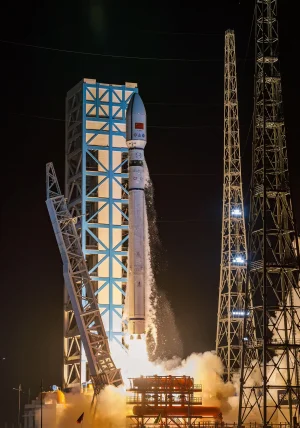- Joined
- Apr 1, 2025
- Messages
- 7
- Likes
- 4

Commercialized Long March 12 rocket could play a role in the construction of China’s LEO megaconstellations
China’s two primary megaconstellations are now under construction, with 2025 set to be a turning point for the projects.
The first launch for the Guowang (“national net”) megaconstellation, aimed at global broadband coverage, took place in December 2024. That meant placing 10 satellites in 1,115 kilometer, 86.5 degree inclination orbits using a Long March 5B. A second launch on Feb 2025 used a smaller Long March 8A rocket to deploy nine satellites into 870 km, 50 degree orbits, suggesting two distinct satellite designs.
The 50 degree inclination satellites appear to target densely populated regions, while the polar satellites provide global coverage. The China Academy of Space Technology confirmed it developed large and small satellite platforms for Guowang, without disclosing functional differences.
Authorities have yet to publish details or images of the Guowang satellites, leading to questions as to whether the satellites could have functions extending beyond commercial use.
Tight deadlines
To meet International Telecommunication Union deadlines, state-owned China SatNet must deploy 1,300 satellites (10% of Guowang) by September 2029 — requiring an aggressive pace of 24 satellites per month, or 284 satellites per year. By 2032, it must scale up to 6,500 satellites (50% of the network), averaging 144 launches per month, or 1,733 satellites per year.Guowang is not limited to using Long March rockets. The commercial launch firm Landspace says it plans to launch a batch of Guowang satellites on one of three launches of its new Zhuque-3 it hopes to launch, starting in the second half of 2025.
Meanwhile, the Shanghai-backed Qianfan (Thousand Sails) megaconstellation saw the launch of its fifth batch of 18 satellites March 11, using a Long March 8 rocket from the new Hainan commercial spaceport. The project now has 90 satellites in orbit and aims for around 600 to be in orbit by the end of the year, while the full system will consist of 14,000 satellites. Operator Spacesail is actively attempting to secure customers around the world.
